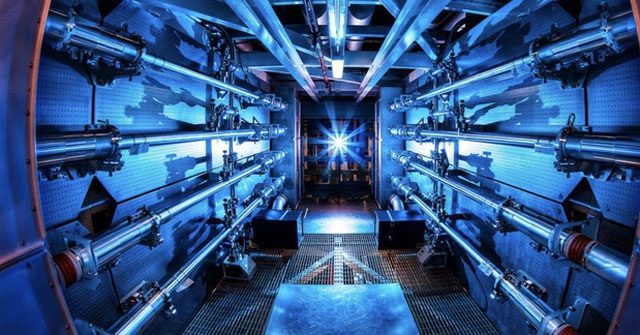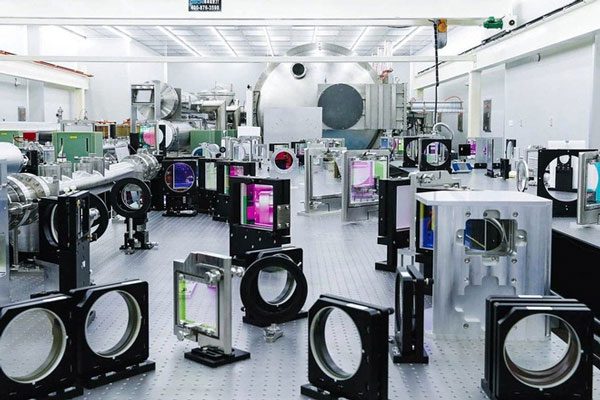This country aims to create a laser with power equivalent to 10,000 times the total electricity consumption of the world combined by 2023.
This ambitious goal is set by a research team in Shanghai. According to the South China Morning Post, the team plans to generate a laser with a power output of 100 petawatts (1,000 trillion watts) within the next two years. This enormous energy level will enable humanity to observe phenomena never seen before, create new materials, and achieve further advancements in energy science.
Liu Jun, a member of the Extreme Light Station (SEL) project at the Shanghai Institute of Optics and Fine Mechanics, believes that generating such a powerful laser is not a simple task. An excessively high output power could damage observational equipment such as crystals, lenses, or mirrors.

Inside an advanced optical device. Photo: Readers Fusion.
To avoid these issues, scientists will need to diffract the incoming beam into a broad spectrum of colors, then transmit an energy level that the equipment can handle into each color beam. Finally, they will compress them into a single beam with significantly amplified power.
The compression stage is where researchers have faced the most challenges over the past few decades. “The compression device will burn out if subjected to excessively high input power,” Liu shared.
In a publication released in the May issue of the Journal of Optics, Liu and his colleagues proposed a more efficient laser method: dividing the compression process into multiple smaller stages. This approach not only reduces the thermal load that the devices must endure but also enhances the output power.

SEL research facility in Shanghai. Photo: SCMP.
The SEL project, with an investment of hundreds of millions of USD, intends to use four lasers to achieve the desired energy level. However, with this new technology, they only need one beam. “The fewer beams we use, the less equipment is required. This simplifies the installation and operation processes,” Liu stated.
Although the laser will only be maintained for a brief moment, experts say it will be sufficient to tear a small hole in spacetime, allowing humanity to observe physical phenomena that previously existed only in theory.
This ultra-powerful laser, when focused on a small point in a vacuum, will cause a subatomic particle to suddenly appear. Previously, scientists could only predict this phenomenon, but SEL has made it a reality.
A scientist at the Institute of Physics at the Chinese Academy of Sciences believes this breakthrough will strengthen China’s position in the high-intensity laser race.
Research teams in Russia, Europe, and the United States have also proposed similar projects. However, the governments of these countries have not yet provided sufficient funding to research and realize these ideas.
This could be a remarkable and significant achievement for the entire world. An anonymous scientist noted that many research institutes worldwide are closely monitoring the project in Shanghai.
“Many competitors are also hoping for SEL’s success,” he said.





















































